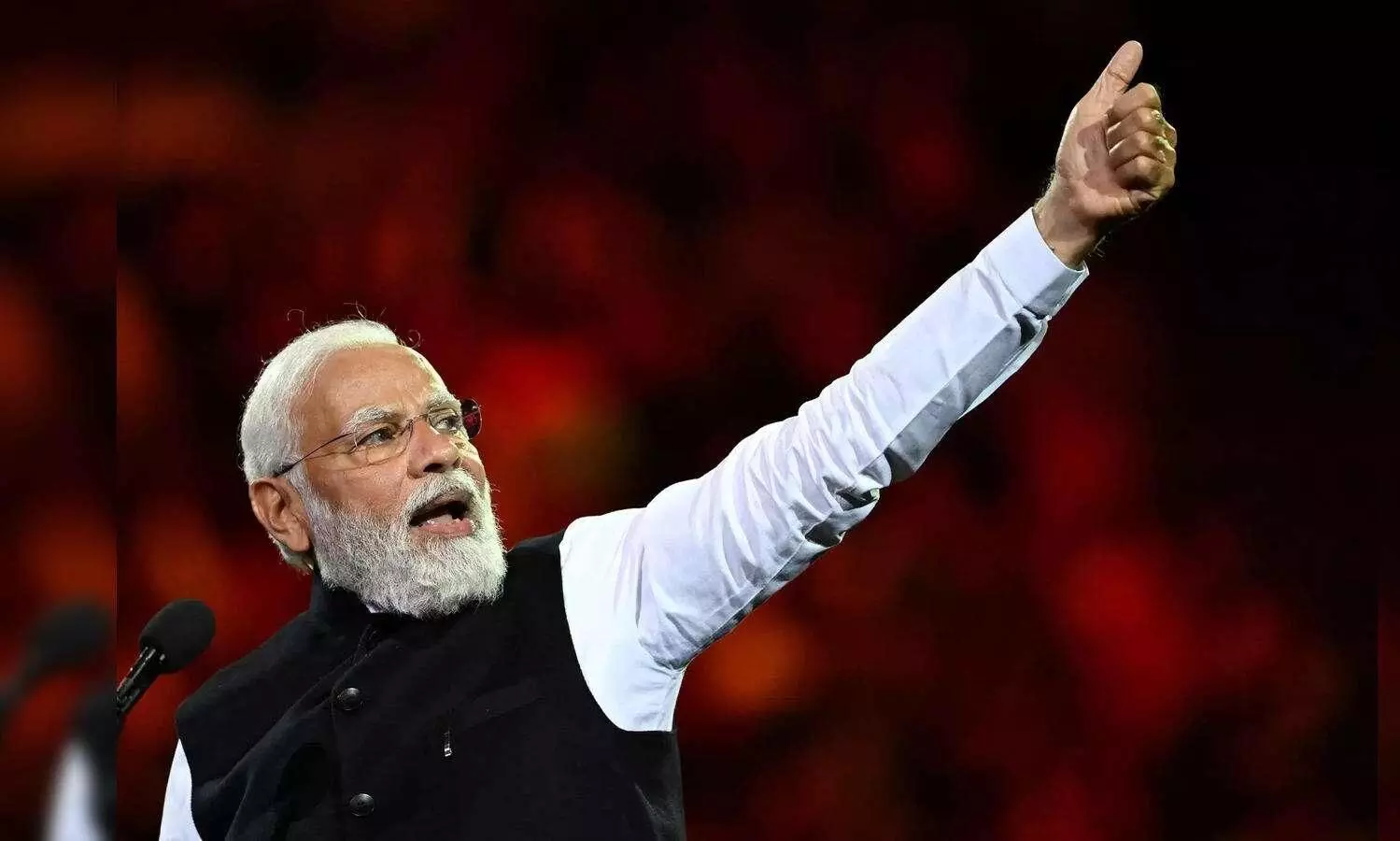
Modi’s presidential style of governance to boost ‘Modi Brand’ as global leader
text_fieldsDuring the second term of his prime ministerial stint, the Prime Minister's Office of Narendra Modi was designed so that all major ministries and their control were centralized in order to showcase Modi as a powerful and strong global leader in a presidential style of governance.
An article in The Wire delves into the strategic movement of this centralized governance, by inducting key civil servant officers into his ranks, with a broader view of handling key domestic and international issues while underscoring the invincible image of Narendra Modi. This is an article based on The Wire's analytical report.
A centralized approach
The PMO, under Modi, has adopted a centralized, almost presidential style of governance, a significant departure from India's traditional parliamentary system. This approach has been characterized by direct control over major events and crises, with a focus on promoting "Brand Modi."
The increase in IFS officers at the PMO is emblematic of this shift, allowing for a more coordinated and streamlined handling of international relations and domestic challenges.
Key issues managed by PMO officers
Rafale deal controversy: IFS officer Vinay Mohan Kwatra's appointment as an officer on special duty in the PMO coincided with the controversial Rafale jet deal with France. Kwatra's subsequent posting as India’s ambassador to France during the height of the controversy underscores the strategic placement of trusted officials to manage sensitive issues. His tenure in Paris helped mitigate the fallout from allegations of favouritism and financial irregularities, ultimately supporting the government's narrative of transparency and integrity.
India-Nepal border dispute: Kwatra also played a crucial role in managing the India-Nepal border dispute, which arose over a contentious map released by Nepal. His efforts in diplomacy and conflict resolution during his tenure as ambassador to Nepal helped maintain stability in bilateral relations, reflecting the PMO's proactive approach to foreign policy under Modi.
Sri Lankan financial crisis: Gopal Baglay, another key PMO appointee, was sent to Sri Lanka as India’s high commissioner during the country's financial crisis. Baglay's management of India's substantial financial assistance to Sri Lanka bolstered Modi's image as a regional leader capable of decisive action, further cementing the PMO’s central role in managing international relations.
The arrest of eight naval officers in Qatar: Deepak Mittal's tenure as India’s ambassador to Qatar saw the arrest of eight Indian naval officers on espionage charges. Mittal's subsequent return to the PMO to handle the negotiations underscores the PMO’s hands-on approach. The eventual release of the officers was presented as a direct result of Modi’s intervention, reinforcing his image as a strong leader.
Domestic influence
Uttar Pradesh elections and Ram Temple construction: IAS officer A.K. Sharma, a close aide from the PMO, was dispatched to Uttar Pradesh to influence the 2022 assembly elections and oversee the construction of the Ram Temple in Ayodhya. His involvement ensured that the PMO maintained a significant influence in the state, a critical region for Modi’s electoral strategy.
MGNREGA reforms: Amarjeet Sinha, after a stint as an advisor at the PMO, was tasked with leading reforms in the Mahatma Gandhi National Rural Employment Guarantee Act (MGNREGA). His recommendations, which questioned the scheme’s foundational principles, aligned with the government’s broader economic policies, demonstrating the PMO’s influence in shaping national policy.
Kedarnath-Badrinath Project: Bhaskar Khulbe, another PMO appointee, was assigned to oversee the development of the Kedarnath-Badrinath shrines. His management of the rescue mission at the Silkyara tunnel, coupled with his strategic promotion of Modi's involvement, highlighted the PMO’s role in controlling narratives around key infrastructure projects.
Crisis management
COVID-19 pandemic: The PMO took a front-line role in managing the COVID-19 crisis. Punya Salila Srivastava, an officer brought in from the Ministry of Home Affairs, became the public face of the government’s response, delivering daily updates and reinforcing the image of hands-on leadership.
Article 370 and Kashmir: The abrogation of Article 370 and the subsequent handling of the situation in Jammu and Kashmir were spearheaded by the PMO, with National Security Advisor Ajit Doval playing a key role. This move further exemplified the centralized approach of the Modi administration, with the PMO directly overseeing significant national security decisions.
Broader implications
The strategic deployment of trusted officials from the PMO to manage both domestic and international issues has reinforced the perception of a presidential style of governance under Modi. This centralization of power and control has allowed the PMO to manage crises, shape policy, and maintain a strong narrative around Modi’s leadership.
While this approach has been effective in promoting "Brand Modi" and ensuring a streamlined execution of policies, it has also raised concerns about the erosion of traditional parliamentary democracy norms in India. The emphasis on a singular leadership style, with the PMO at its core, marks a significant shift in the functioning of India’s governance and its political landscape.





